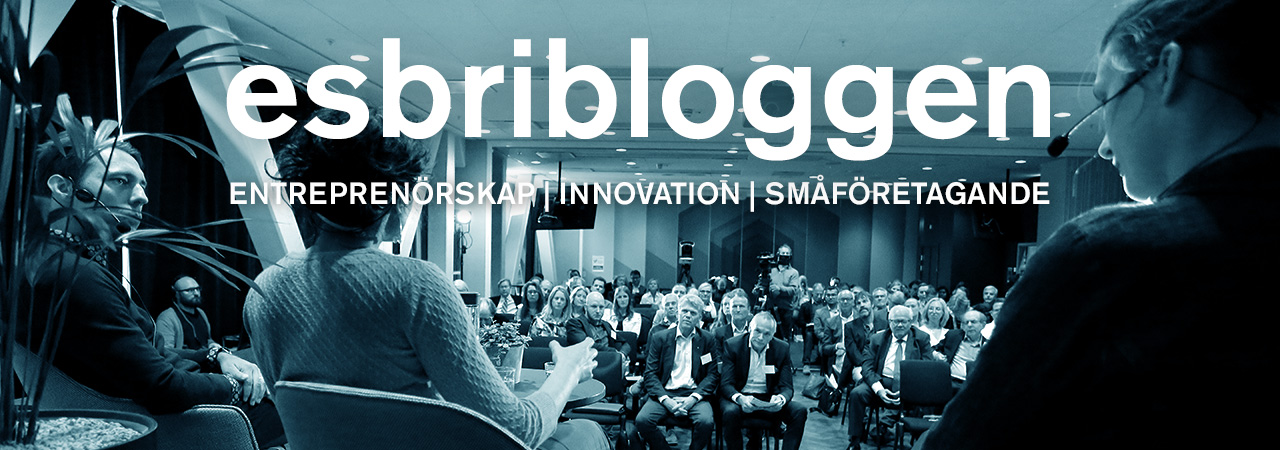 |
| Foto: Johanna Hanno. |
Hoppas att ni alla har haft en härlig sommar! Nu börjar
vi på ESBRI att komma tillbaka i vanliga gängor, och vi ser fram emot höstens
alla aktiviteter.
Vi sparkar igång Estradhösten 12 september, föreläsaren
heter Martin Kenney och är professor vid University of California, Davis. Några
av er hörde honom kanske på Sweden-U.S. Entrepreneurial Forum 2011.
I samband med det intervjuade jag honom för en porträttartikel i Entré. Han sa bland annat att ”Den som
inte levererar är rökt” och syftade på den ganska hårda tillvaron i Silicon
Valley.
Kenney har växt upp i Kalifornien och forskat om
riskkapitalindustrins rötter, framväxten av bioteknik- och IKT-företag samt hur
industrin och akademin samverkar. Han har djup kunskap om mekanismerna i
Silicon Valley och kommer att diskutera de spridda mytbilderna. Missa inte det!
Anmälan är öppen.
Så här säger Martin Kenney om sin Estradföreläsning:
“In many respects, the debate about regional innovation
systems has been framed by the success of Silicon Valley. Despite the many reports, articles and
books written about Silicon Valley, the complex history of the region is often
reduced to a simple recipe based on a snapshot in time. Such simplistic accounts often omit the
role of the federal government particularly in the early days of the region,
while other accounts attribute the entire success of the region to government
policy. This presentation seeks to
provide a historically nuanced and balanced account of the region’s
evolution. This account, in some
respects, finds the success unique and therefore irreproducible. However, we
also believe that there are lessons that other regions can apply to their own
unique endowments to encourage entrepreneurship and innovation.
Building upon our previous work, we describe a model of
the Silicon Valley innovatory economy based upon what we term “Economy One” and
“Economy Two.” Economy One is
composed of existing firms and entrepreneurs intent upon building firms that
will produce goods and services for businesses and individuals. This is the normal economy that firms
and consumers inhabit. However,
Silicon Valley has built another economy, Economy Two, which consists of
various intermediaries whose role is to facilitate entrepreneurs in
commercializing new technologies or business models through the medium of new
firms. This is the economy of
venture capitalists, lawyers, accountants, etc. that specialize in providing
services to new firms. These
intermediaries assist in recruiting managers and executives, making
introductions to potential customers, and providing the myriad of other
services that a fledgling firm requires to grow rapidly. Their product is new firms that can be
sold to either existing firms or public stock markets for enormous capital
gains. It is these intermediaries that are the gatekeepers looking for the “new”
new thing that will lead to these capital gains.
The key to an economy such as Silicon Valley is to be
able to “peer over the horizon” and see the newest technology. For this ability it is necessary to
attract the brightest, most highly motivated engineers and managers in the
world. Having three of the top ten
universities, Stanford, University of California, Berkeley, and the University
of California, San Francisco – an unrivaled concentration – is important. The concentration of powerful technological
leaders such as Cisco, Google, Intel, Oracle, Yahoo!, to name the recent
leaders, is vital. These are the
sources of trained managers and entrepreneurs.
This presentation discusses the history and development
of Silicon Valley and some unique features of the California legal system, such
as an inability to enforce non-compete agreements and ease of filing
bankruptcy, that further lower barriers to entrepreneurship. Finally, we speculate on potential lessons
applicable to Nordic nations.”
Glad höst!
/Åse

Inga kommentarer:
Skicka en kommentar